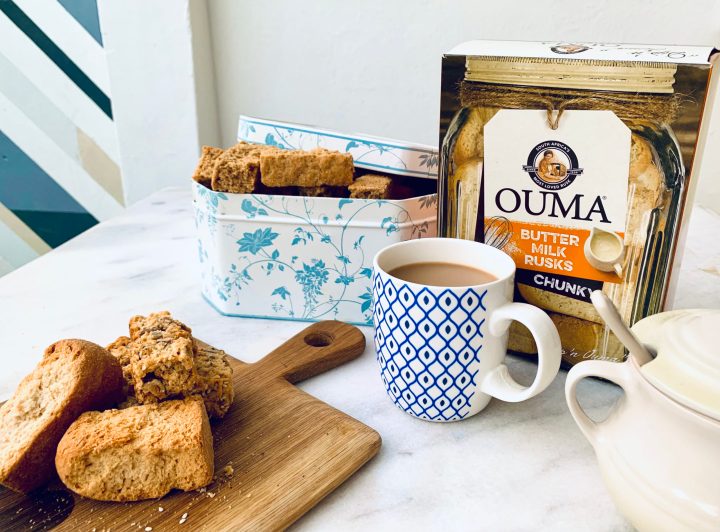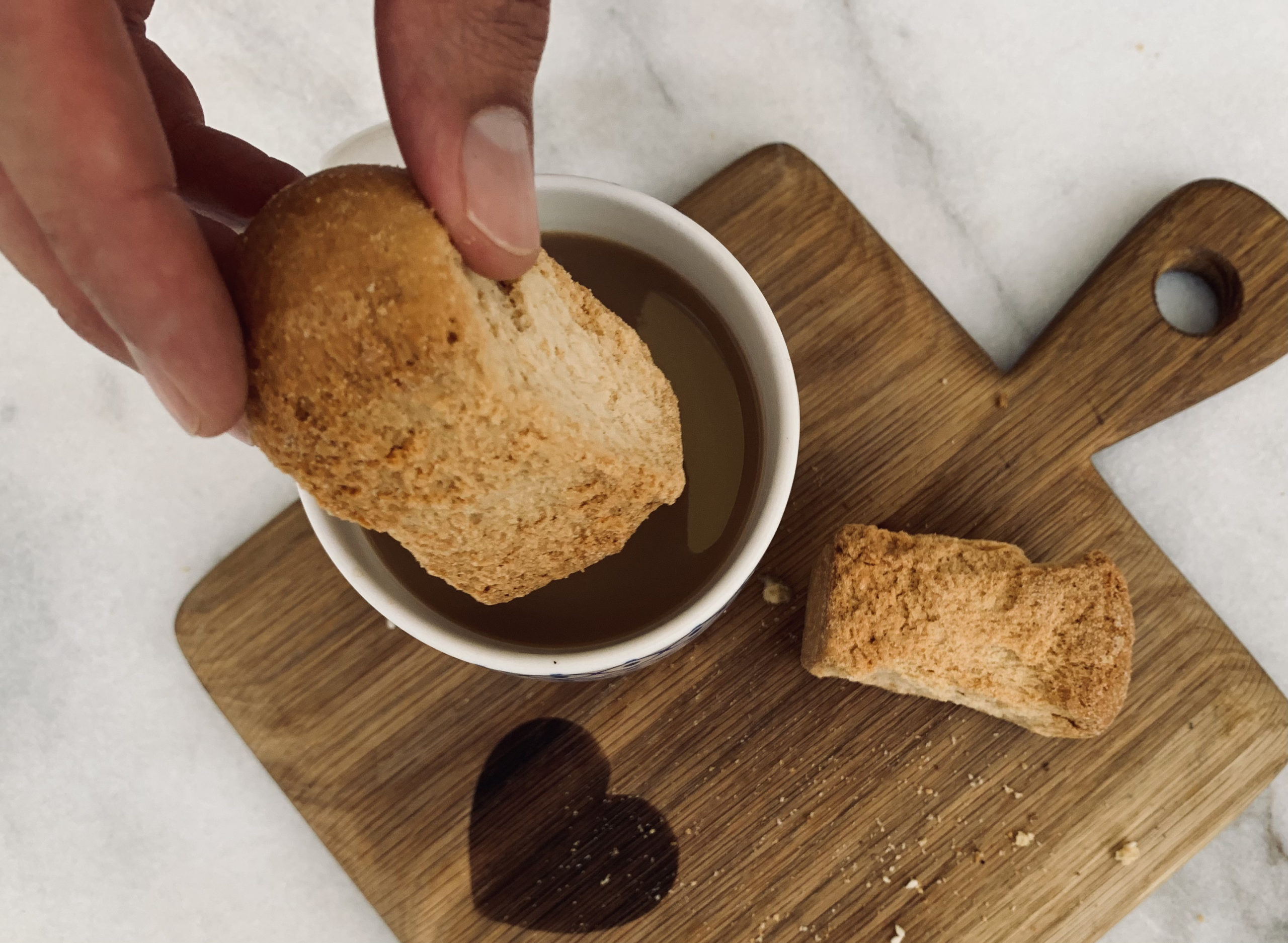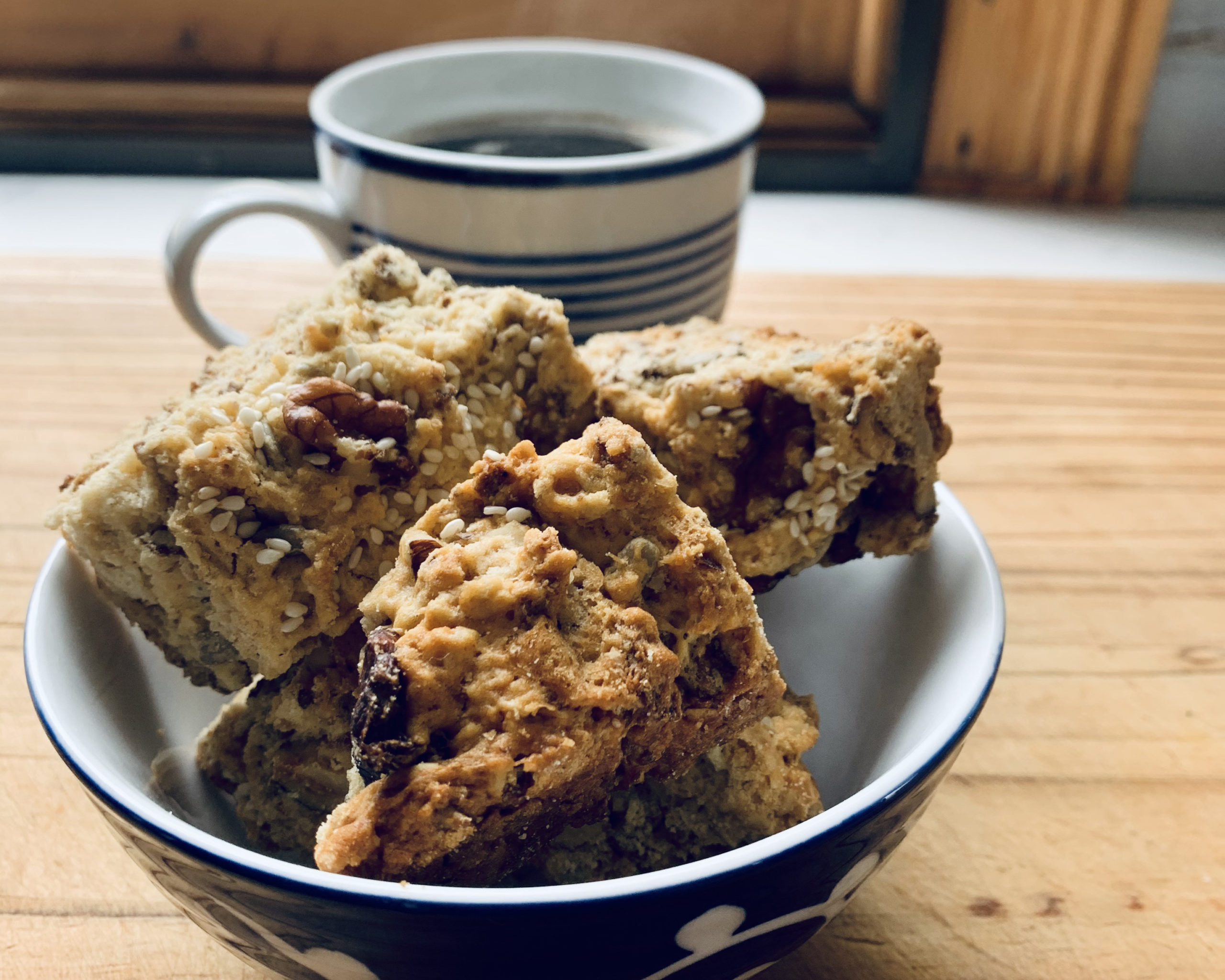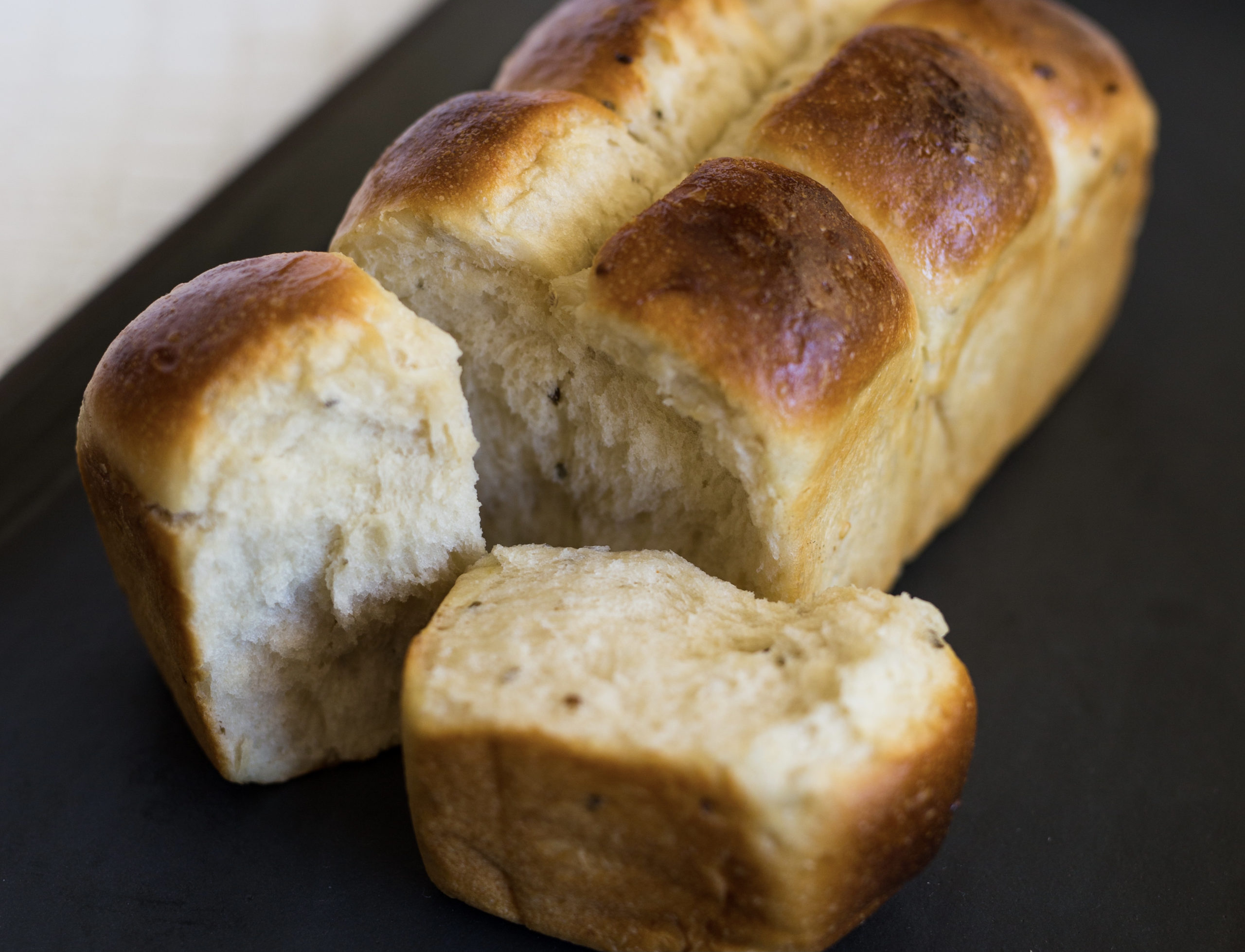FARM TO TABLE
Rusks and Oumas: Foundation of a nation

In this final edition of our Farm to Table series which began two years ago, Louzel Lombard Steyn pays respect to a sacred tradition.
Rusks are as dear to South Africans as the Oumas who made them famous, whether your favourites come from a biological Ouma who diligently bakes a monthly batch for all her children and their households, a borrowed, neighbourhoodly Ouma in whose precious thoughts you happen to be, or the now-famous Ouma from Molteno in the Eastern Cape.
As my Farm to Table food series comes to an end after two years, I know there is one more iconic South African product left to celebrate. I’ve dreaded writing about it simply because I do not deem myself worthy. I’m no Ouma. I have not the necessary skill nor experience to have an authoritative voice on the matter. Rusks are sacred. This is holy ground.
Alas, they form part of our South African food foundation and I shall try to do them justice. The Oumas and the rusks, naturally. Perhaps more than every other product combined, rusks have meant a lifeline for countless Afrikaners since the start of the culture in South Africa.
Every small town has a rusk baker. In Cradock, it’s Elise Moolman of Eldorado Rusks, who has gained fame for her crumbly buttermilk morsels in every corner of the Eastern Cape. She stocks five home industries in Port Elizabeth, as well as the farm stalls of the region.
“I started in 2007 when my husband Kobus and I moved to Eldorado Farm,” Elise says. “I was baking for the home industry Dit & Dat in town at the time and wanted to make something with a longer shelf life. Rusks were the answer… and it hit the right spot. Soon, Kobus had to make deliveries to adjacent towns when he drove in their direction. Nowadays, during the peak season in winter, I bake over a half-ton of rusks every week. My AGA stove runs throughout winter so I can bake non-stop.”
An AGA is the secret weapon of many a farmer’s wife. With its four smaller ovens burning constantly at different temperatures, it’s the perfect vessel for the chain production of rusks. All rusks are twice-baked, as the French-origin Afrikaans word “beskuit” suggests. However, if you only have a conventional oven, this means continually turning the oven higher and lower for the baking and drying out processes, respectively. An AGA, on the other hand, can handle the first bake of the dough while also drying out the rusks as needed in the second phase – all at once.
For Elise, the AGA’s efficiency and a loved Moolman family recipe – with a few tweaks – became the backbone of her now-famous range of six rusk flavours, including modern twists such as Apple & Cinnamon and Marmalade. “It won’t make me rich,” Elise says. “But over the past 13 years, the business has maintained our entire household and helped the kids through university. It’s been a lifeline.”
For many bakers before her, it meant the same.
Towards the end of the 1690s, Voortrekkers were the first to make South African rusks the way we know them today; hard but crumbly twice-baked treats made with buttermilk and enjoyed best with black coffee. The latter wasn’t necessarily the preference, but fresh milk wasn’t readily available… especially when the trekkers were halfway over the Drakensberg when hunger and fatigue struck. So early Afrikaner women, influenced by their French and other European roots, adapted existing recipes for “biscuit” to include the ingredients available.
Buttermilk wasn’t necessarily a very desirable ingredient back then; a considerably less appealing by-product of butter. But food was scarce and throwing out anything taboo. So when available, the brownish liquid* was saved and baked into the biscuits for taste and creaminess.
Real buttermilk, unlike the “cultured buttermilk” we buy in stores these days, is vastly different from the real deal. Actual buttermilk – which separates from cream when making butter – is light brown with a watery consistency and extremely creamy taste.
The original buttermilk recipe was both nutritious and ingenious. Baking the creamy buttermilk into the rusks essentially dehydrated the liquid into a “long-life” creamer. This added nutrition and flavour, as the buttermilk would be released again when dunked into a cup of black “moerkoffie”. It actually turned the coffee milky!

The breakfast of champions, a dipped Ouma. (Photo: Louzel Lombard Steyn )
The treat remained relatively inconspicuous within the Afrikaner community until 1939, amid the Great Depression, when one Elizabeth Ann Greyvensteyn from Molteno started a rusk business in response to an initiative by the town’s pastor, encouraging women from this rural community to help make some money. Ouma Rusks was born, signalling the inevitable commercialisation of buttermilk rusks. And it hasn’t stopped since. Not for the Molteno’s national icon, or for the women who continue to bake to help sustain their communities and families. Ouma Rusks remains Molteno’s most important industry and is the biggest employer for locals in a radius of 150km.
Food author and huiskok Errieda du Toit says rusks are perhaps one of the most engrained foods in South African culture. “Every community recipe book I’ve studied has a recipe for buttermilk rusks. It’s why I’ve dedicated the opening chapter of my new book, SHARE, to them. They’re everywhere. It’s a simple snack that has managed to absorb every new food craze in its stride, still managing to stay relevant and popular. Health rusks are the favourite – for now. Regardless of the trends, they remain. In fact, a home without rusks feels empty and incomplete.”

Buttermilk rusks have stood the test of time and continue to morph to incorporate new food trends. These healthy muesli rusks contain little sugar and lots of seeds and nuts. (Photo: Louzel Lombard Steyn)
Buttermilk rusks are a big favourite because they require no overnight rise and are therefore quicker to make. However, they are but one version of SA’s spectrum of twice-baked delights.
In the Cape, another type of rusk was being baked in bulk to sustain a totally different crowd.
“The Cape of Good Hope established a reputation for excellent baking very early on,” Errieda says. “The Dutch bakers were experts and rusks were at the top of everyone’s lists.” Able to withstand journeys on sea longer than any other foods and being delicious to boot, rusks were so popular that the VOC at some stage sabotaged rival ships by prohibiting bakers to sell to them. Whoever had the rusks, had the power. “And the quantities in which they were baked bordered madness,” Errieda says. Tons and tons of rusks left the Cape to sustain seafarers the world over.
In the Winelands regions, the variation was called mosbeskuit – a rusk made via a fermentation process with grape must to produce long strands of buttery fingers that are ultra-absorbent when dunked.
This type of long rusk, or langbeskuit as it’s also called, was a seasonal treat traditionally baked during the harvest season. Later on, raisins were soaked and rehydrated to make the must for mosbeskuit. When yeast became more readily available, the second-generation version aka soetbeskuit was popularised. It still required great skill and was still made using the same fermentation techniques, but the taste differed slightly from the original grape must version.

Mosbolletjies. (Photo: Ian du Toit)
“Soetbeskuit is the more luxurious version in our South African rusk repertoire,” Errieda says. These are the high-top, high-gloss rusks. Their lustre thanks to a fermentation process which forces small dough balls that are packed together tightly in a long pan to rise upwards, creating long “legs” or strings.
After the first bake, the bolletjies are delicately torn from one another. What happens here is critical. Ideally, fine strands of angel hair-like gold must form the sought-after veertjies or feathers of the rusk. The lighter the feathers, the better the baker. From here, those golden strands are set in the drying process, ready to be soaked again and enjoyed as a kind of soft marshmallow-cake combo.
Many soetbeskuit don’t even make it that far, actually. An entire demographic of rusk lovers prefer their soetbeskuit in loaf form, undried, as a form of cake or brioche-like snack to enjoy with butter and tea. Either way, it warms the soul.
That’s their appeal, I guess. As simple and commonplace as they are, rusks mean home. They acknowledge our need for nostalgia in food and every Afrikaans South African will eagerly tell you of their family favourite.
They’re powerful too; equally effective for lining your stomach in the morning as they are for fuelling the formation of the modern world via shipping routes and political manipulation. Rusks have put countless children through school and helped many more find comfort when longing strikes – whether it be on the open sea, in boarding school, or when you’re stuck in another country during a global pandemic.
For my family, rusks have also meant a last little comfort. Our Ouma Heilie Marais passed away from Covid-19 late last year, but her world-best buttermilk rusks still fill our tins. She always baked a VOC shipment’s worth and now we get to experience our Ouma for a little longer, even in her absence. Morning coffee has never been more sacred.
Ouma Heilie’s rusks
Ingredients
1,5 kg self-raising flour
500 g Cordon Bleu butter flavoured margarine
2 cups real buttermilk (rather use pouring cream than store-bought cultured buttermilk)
3 tsp baking powder
2 tsp salt
3 cups sugar
3 eggs
Method
Beat together the sugar and margarine until creamed. Mix in the eggs one by one until well incorporated. Mix in the buttermilk or cream.
Sift together the remaining dry ingredients and fold into the dough.
Transfer to rusk pans or a deep baking sheet and bake at 180℃ until slightly risen and cooked through.
Allow to cool completely before slicing into rusk fingers. Use a serrated knife. Gently transfer the rusks to a drying rack. Dry overnight in a cool oven of about 80℃, with the oven door wedged open with a wooden spoon. They must dry out completely. Store in an airtight container. DM/TGIFood





Comments - Please login in order to comment.